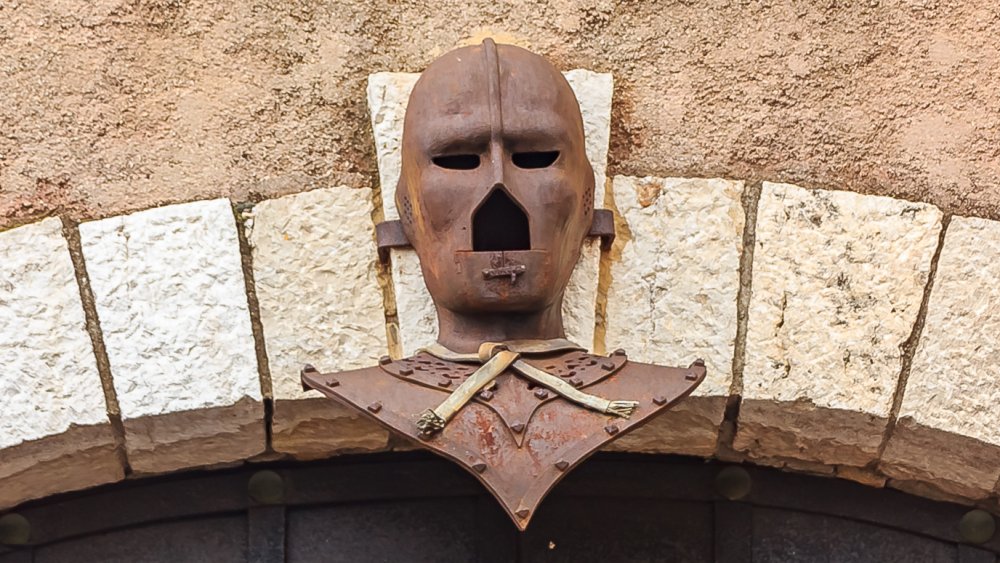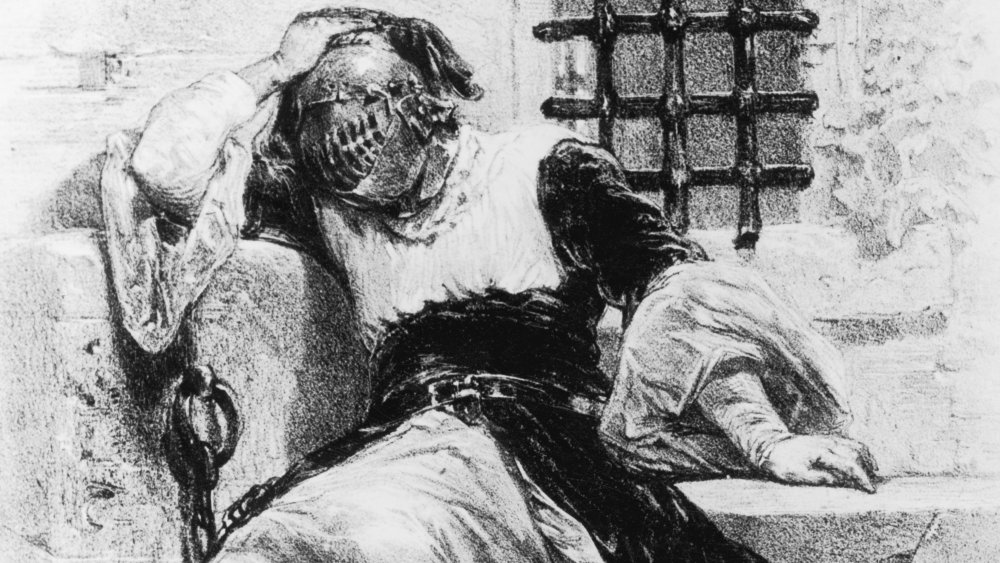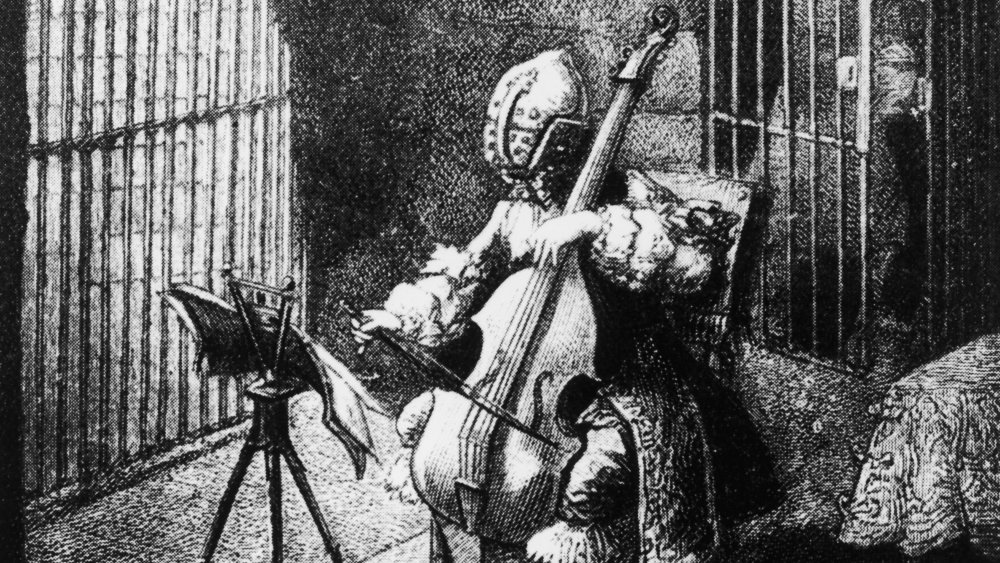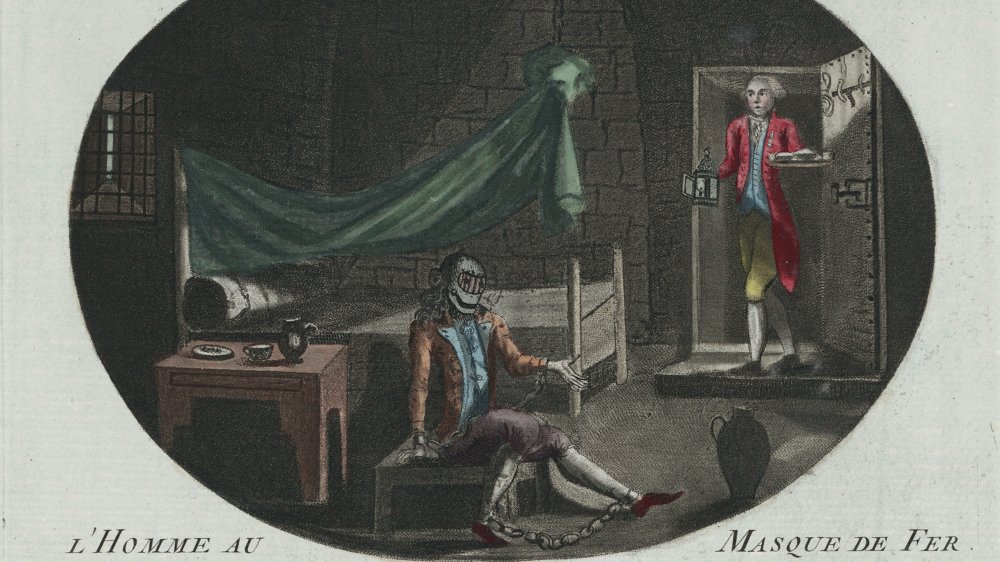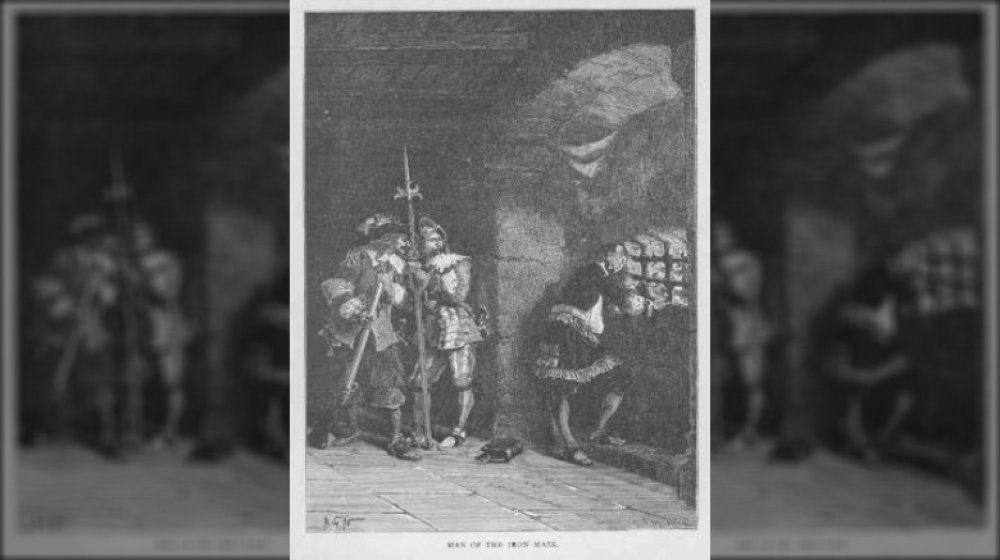Who Was The Real Man In The Iron Mask?
In July 1669, the Marquis de Louvois sent a letter on behalf of King Louis XIV to the governor of the Pignerol prison, giving him a heads up that a new resident was en route. According to Britannica, the correspondence named the prisoner as Eustache Dauger, a humble valet arrested on charges that remain hazy. A specialized cell with extra doors was built for the man to minimize the odds of anyone seeing his face, and his caretaker was given strict instructions only to check on him once per day and, on pain of death, to limit the scope of conversation, essentially, to "you hungry?" and "you good?"
Mysterious? Terribly. And the situation only became more compelling and enigmatic with time, as the prisoner came to be known as "L'Homme au Masque de Fer," the Man in the Iron Mask. Who was he? What was his crime? Did he really wear a skillet on his face for 30-plus years? The answers, in order, are "hard to say," "nobody's sure," and "probably not."
The misnomer in the iron mask
The most disappointing part of the story of the Man in the Iron Mask is probably the big "iron mask" let down. As National Geographic points out, it's likely that calling the prisoner's facial accoutrement "iron" was more of a poetic interpretation than a physical description. Historians tend to favor the theory that he wore a velvet mask, only metaphorically iron in that it was meant to be a permanent addition to his wardrobe. Goldfinger's finger wasn't really gold, and the members of Iron Maiden were largely made out of squishy flesh bits. Truth in advertising has always been a tough nut to crack.
In any case, the man's identity was a closely kept secret, and curious minds have been launching theories like clay pigeons for hundreds of years, only to see them shot down by people who probably love starting their sentences with the word "actually." Some records point to a real Eustache Dauger — a valet who witnessed some embarrassing church-related skullduggery involving either misappropriation of funds or, and this is a stretch, a "black mass" ritual — as the genuine deal, but there's conflicting evidence there. Dauger may have died either in a separate prison from the Man in the Iron Mask or in a drunken stupor after losing his job.
Conspiracies on all sides
In his his book Who Was The Man In The Iron Mask? And Other Historical Mysteries, Hugh Ross Williamson posited that the prisoner was (twist!) the secret biological father of Louis XIV, stating that Louis XIII had been estranged from his wife for more than a decade when the bouncing bundle of monarchic joy was born. His theory hinges on Cardinal Richelieu, who was on the outs with heir apparent Gaston, Duke of Orleans. Not wanting to spend his retirement selling magazines to fund his lifestyle, Richelieu set Queen Anne up with a secret FWB to ensure a more loyal heir. It was a different time. Maybe people gave a lot of credence to priests telling them who to hook up with back then. Either way, according to Williamson, the poor boyfriend quickly found himself behind bars.
Twists and turns
Maybe the whole affair came down to a dramatic gesture. According to Ancient Origins, French military historian Louis Gendron believed that the prisoner was Vivien de Bulonde, a French general living out his own Canterville Ghost scenario after his dishonorable and, by the king's reckoning, cowardly withdrawal of troops from the siege of Cuneo in 1691. The dates in question don't add up, but coded letters from King Louis XIV make for a compelling case.
As for other theories, Voltaire theorized that the Man in the Iron Mask was the illegitimate older brother of Louis XIV, the son of Cardinal Jules Mazarin and the Queen of France, but Voltaire was a pot-stirrer who had a crush on his niece. And of course, Alexandre Dumas weighed in on this real-life mystery, saying that the prisoner was Louis XIV's identical twin brother. As an indirect result, 150 years later, Leonardo DiCaprio thought that Louis XIV had an American accent. There were holes in both theories.
The moon man in the iron mask
From there, the speculation just gets more wild-eyed, from "hideously disfigured stain on the royal family" to National Geographic's theory that this was Louis' son, disgraced when he came out as a gay man.To the best of our knowledge, Ancient Aliens has yet to theorize that the Man in the Iron Mask was a martian held captive by the 17th-century French "Hommes en Noir," but they've only been on the air for 15 seasons, and we're sure they'll get around to it eventually.
Whatever the case, records from the Bastille, where the mystery man was moved in 1698, indicate that the prisoner died in November 1703 and was buried under the name Marchioly. Was there a cryptic secret meaning to this name? Nobody knows. Sometimes history is disappointing like that.
